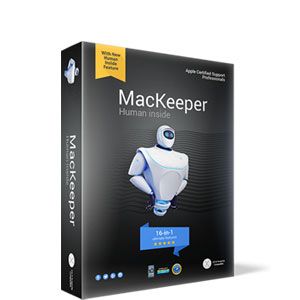
- Mackeeper reviews 2017 how to#
- Mackeeper reviews 2017 update#
- Mackeeper reviews 2017 software#
- Mackeeper reviews 2017 free#
- Mackeeper reviews 2017 mac#
You can fix many problems in Intel-based Macs by resetting the System Management Controller (SMC).
Mackeeper reviews 2017 mac#
Turn on your Mac by pressing and holding the power button.On an M1 Mac, you can run Apple Diagnostics like this: Pick a language, and Apple Diagnostics will run automatically, spitting out a result at the end.Keep holding it until a list of languages.Turn on your Mac, then press and hold the D key.
Mackeeper reviews 2017 how to#
Here’s how to run Apple Diagnostics on an Intel Mac: However, there are no guarantees that this will work. Using macOS’s built-in Apple Diagnostics, you might be able to find the source of the issue. If these sensors break down, that could also cause your Mac’s fans to spin faster and louder. But that’s not the only potential hardware problem - Macs have several heat sensors inside them, which tell the fans when to spin faster. Check for hardware problemsįaulty components can sometimes produce excessive amounts of heat. You could also aim a desk fan at your Mac to help it cool down. The fix is quite simple: bring down the temperature in the room by opening a window or lowering your heating. That could be enough to make it spin up its fans and start making a noise. It might seem obvious, but if you’re in a hot room, your Mac will be hot too. Click Quit to shut the process down Bring down the ambient temperature If anything is using an excessive amount of CPU time, select it and click the X buttonĤ. In the CPU tab, click the top of the % CPU column to sort by highest firstģ. Go to Applications > Utilities, and open Activity MonitorĢ. How to stop processes with the macOS Activity Monitor:ġ. Using the Activity Monitor app, you can stop your Mac’s loud fan noise by shutting down whatever is making your processor work so hard. The more it has to do, the hotter it will get. When your Mac’s processor is under high load, it will heat up. A vacuum cleaner could also do the trick but be careful, especially if you have a powerful vacuum cleaner. What you can do is get a can of compressed air and try to blast some of the dust out. If you own a Mac Pro, you can simply pop off the side and clean it out, but you can’t do that with other models. Removing this dust can stop your Mac overheating and producing loud fan noise. Over time, that builds up and sits on the motherboard and components like a blanket. One of the big problems with fan-based cooling is it draws in dust as well as air. If they are, use a brush to clean them out. With all types of Macs, you should also make sure the vents aren’t clogged up with anything. So if your MacBook is running loudly, try moving it to a hard, flat surface, like a table or desk.

This happens a lot with MacBooks when users place them on soft objects like beds or cushions. If any of the vents are blocked, that can’t happen, so your Mac keeps getting hotter - and the fans keep speeding up to compensate. The fans in your Mac work by pushing warm air out and pulling fresh air in.
Mackeeper reviews 2017 free#
You get one free fix for each tool, so you can test it properly. Try it out today to see what else it can do. MacKeeper is a complete security and optimization tool for Macs.
Mackeeper reviews 2017 update#
Mackeeper reviews 2017 software#
Sometimes, problems with third-party software can cause your Mac to overheat. Of course, we can’t know for sure why your particular Mac is having problems with its fans, so it’s worth working your way through these tips. In this guide, we look at some of the potential reasons for loud fans in a Mac, as well as things that might fix the problem. In that case, you might be wondering why your Mac’s fans are so loud.

Sometimes, though, they’re excessively noisy or they might kick in when you’re not doing anything with your Mac. But do something more demanding like video editing, and they may start to spin faster, making more noise in the process.

They usually hum along quietly in the background. Most of the time, you won’t even notice the fans running. And the more you use them, the hotter they get. Processors and other electronic parts all generate heat when they’re used. Apart from a few exceptions, like the 2020 MacBook Air and the 2015 MacBook, all Macs have cooling fans.


 0 kommentar(er)
0 kommentar(er)
